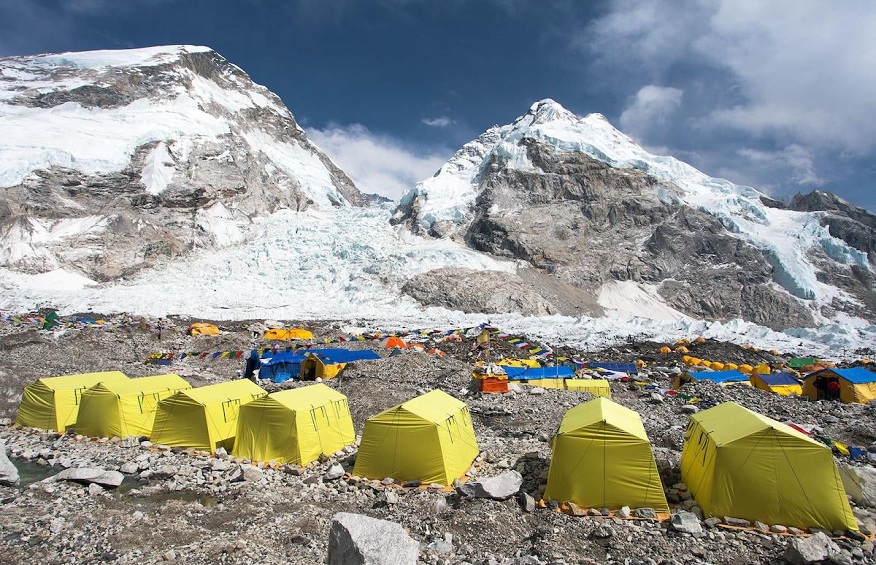Everest Base Camp trek is like a dream for many mountaineers and adventurers. Getting to see breathtaking views of the world’s tallest mountain is not something one would like to miss, a chance to immerse oneself in the Himalayan culture.
The trek is very much impacted by the time of year it is undertaken. With each season comes its own difficulties and challenges. Deciding which time to embark on the trek is very crucial. Depending upon the time you choose, you will have different types of experience, not every season is the same.
Trekking Everest Base Camp in the Peak season
Autumn is usually the peak season for 12 Days Everest Base Camp trek. It typically runs from September to November. The weather is generally clear and stable. Clear sky and stunning views of the peaks is what you will get to see during this time. Autumn is when the largest crowds are present.
It is a weather-friendly time for trekking in most of the Nepalese mountains. The views during this season are a major factor to attract more people to the Everest Base Camp trek.
Trekking Everest Base Camp in the off-season
The off-seasons for the Everest Base Camp trek includes winter and summer. These two seasons are considered as off-season dute to the harsh challenges that come with them.
Winter Off-Season (December to February)
Everest region in the winter is characterized by cold temperatures at higher altitudes. Daytime temperatures at lower elevations can range from 5 degree celsius to 15 degree celsius, but temperatures drop significantly at night, often below freezing. Sub-zero temperatures become common sometimes at higher elevations going well below freezing.
Winter season has less number of trekkers on the trails compared to the peak season. You can expect more solitude and calm teahouses. The snow-capped peaks and frozen waterfalls are breathtaking during this time, the surrounding area is often covered in snow. The atmosphere is beautiful in winter. Also, trekking services and accommodation become much more affordable since most people donot trek in winter.
Cold is the biggest problem you will face in this season. As beautiful as the atmosphere looks, it can be dangerous as well due to immense cold. Winter gear, warm clothing, down jackets, and insulated sleeping bags are a must when you decide to trek Everest base camp in December. Don’t forget to pack some nutritious food as well and keep yourself hydrated.
You will have less daylight for trekking each day because days are shorter in winter. The snow and ice on the way make the trails slippery so you have to be more careful. Navigation becomes tough due to snow and ice. Be aware that avalanches and trail closures are also possible in some areas. Some lodges may close during winter due to less trekkers, so plan your itinerary carefully.
Summer Off-Season (June to August)
The monsoon season in Nepal coincides with summer in the Everest region. There is frequent heavy rainfall, especially in July and August, which indicates an increased risk of cloudy and overcast conditions.
In summer there are less number of trekkers as in the winter. You will have a much more quiet and peaceful environment. During the monsoon, the region is lush and green with beautiful flowers and vegetation. People who enjoy challenges and dont mind getting wet in the rain can experience a unique and adventurous journey in summer.
The trails become muddy and slippery due to heavy rainfall, which is very challenging. Some sections are very dangerous at this time. And if you are scared of leeches, this is definitely not the best time for you. During the monsoon, leeches are found often on the trails. Precautions should be taken properly to avoid them.
Getting the same view as in the autumn is not possible in summer. The clouds often cover mountain views which can ruin your experience. You may not get the clear, panoramic view that you usually get in the autumn. The risk of landslides and avalanches increases in the monsoon. You have to be really careful when going in areas prone to such events.
Some tips for trekking Everest Base Camp in the off-season
For winter trekking:
- Warm clothing: Invest in high-quality products and layer yourself well
- Sleeping bag: Use a cold-weather sleeping bag rated for sub-zero temperatures
- Footwear: Insulated and waterproof boots are important to keep your feet warm and dry in harsh conditions
- Hydration: Stay hydrated and carry an insulated watter bottle
- Plan for shorter days: Since there are shorter daylight hours in winter, plan shorter trekking days to reach destination before dark
- Accomodation Reservations: Make advance reservations cause some lodges may be closed
For summer trekking:
- Rain gear: Pack high-quality, waterproof rain gear, including a rain jacket, rain pants, and a rain cover for your backpack
- Leech protection: Use a repellent to avoid leeches and carry leech socks
- Trail Safety: Be cautious of slippery and muddy trails
- Slow and steady: Trekking in the rain is physically demanding. Take your time and stay safe.
- Flexible itinerary: More flexible itinerary can help you have proper mountain view cause raing and fog may limit it. Consider rest days in case of bad weather.
Trekking Everes Base Camp in Off-season does offer fewer crowds and unique experiences but they come with a lot of challenges. Winter and summer both have their advantages and disadvantages. Trekking in winter requires excellent gear while trekking in summer means facing rain and leeches. Plan accordingly with your comfort level if you choose to trek during the off-seasons.

